Sergei Bondarchuk’s War and Peace (1966-67):
Criterion Blu-ray review
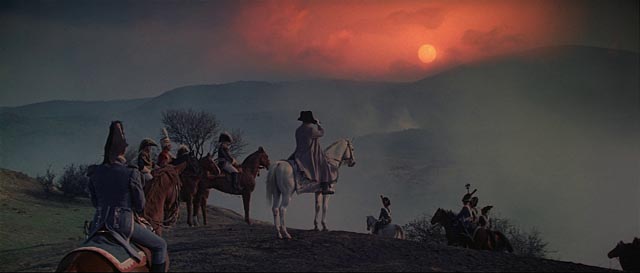
At the height of the Cold War there was a brief cultural thaw under Nikita Khrushchev, one result of which was the distribution throughout Russia of King Vidor’s 1956 all-star version of Leo Tolstoy’s War and Peace. While the movie was a popular success, it was recognized as something of a travesty of the novel, which had long been considered the great national epic representing the triumph of the Russian soul over the military and political power of Napoleon. It quickly became a point of national pride that the Soviet film industry must create its own adaptation of the novel, to show Hollywood how it should be done.
For decades the Soviet industry had been under the political control of party bureaucrats, but in the late ’50s a newer generation of filmmakers had been chafing at the constraints imposed on their creative efforts. Not surprisingly, a production like War and Peace would be fraught with tensions between the old and new guards; such a project would be much more than a mere movie … it would also have to stand as a monument to the power of the state to create a great work of art.
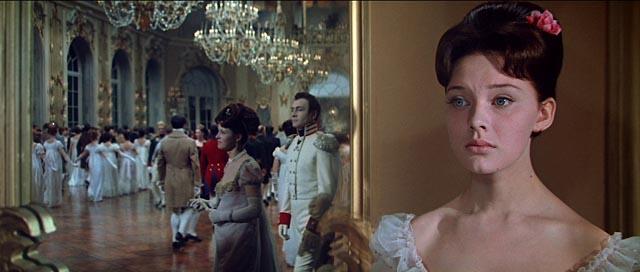
Many filmmakers vied for the honour of making the film, so it was surprising – and widely resented – that the task was finally assigned to an actor who had previously directed only one small, though successful, movie – Fate of a Man (1959). While there was no clear indication that Sergei Bondarchuk might have the skills necessary for such a huge undertaking, in the event he proved himself more than capable, not only co-writing and directing what still remains one of the largest-scaled productions in the history of cinema, but also performing in the key role of Pierre Bezukhov, the character through whose eyes we see the War of 1812.
In production for five years, War and Peace became four separate features which together run just over seven hours. Provided with unlimited resources which included access to numerous museums and the full cooperation of the Soviet military, Bondarchuk and Mosfilm were able to outdo anything that a big Hollywood studio could achieve. Watching War and Peace even today inspires a sense of awe; the opulent palaces and ballrooms and panoramic battle scenes involving 15,000 soldiers reenacting brutal historical events have a visceral power which even the most sophisticated CGI is still unable to match.
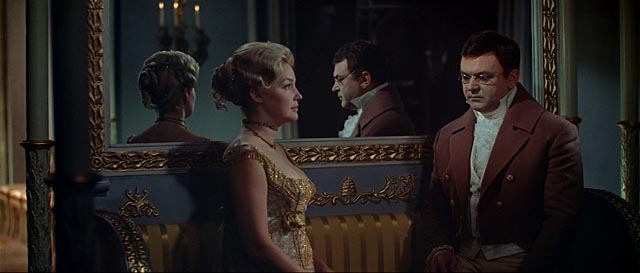
As with any epic movie, the biggest challenge was to find a balance between the characters’ stories and the spectacle. In this, I’m not sure that Bondarchuk was entirely successful, as for long stretches the individual characters almost vanish into the background. And yet the cumulative effect does reflect Tolstoy’s theme of the conflict between vast historical forces and the value of individual lives.
In his performance as Pierre, Bondarchuk gives the film an overriding air of melancholy. He begins as an aimless and dissolute man, unacknowledged by his father until his father’s final moments on his deathbed. Although he inherits the title and fortune of a count, he is not fully accepted into aristocratic society. He remains something of an outside observer, finding himself unenthusiastically married to Helene (Bondarchuk’s wife, Irina Skobtseva), a rather vacuous woman who flaunts her affairs, leading Pierre to foolishly challenge her lover, Dolokhov (Oleg Efremov), to a duel. Having wounded the other man, but escaping unscathed himself, Pierre finally begins to think about his own sense of purpose.
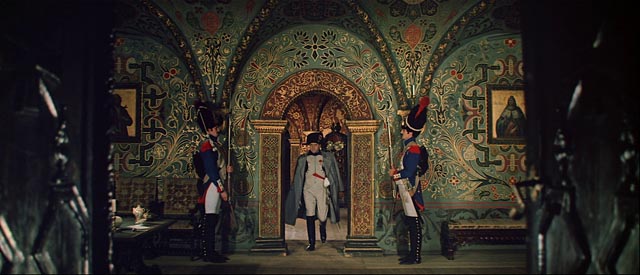
As the tides of war wash over Europe, the main objects of Pierre’s observation are the naively romantic young Natasha Rostova (Ludmila Savelyeva), for whom he harbours unexpressed feelings, and his friend Prince Andrei (Vyacheslav Tikhonov). Having brought the two together, he sees Natasha betray her own feelings for Andrei when she is seduced by Helene’s dissolute brother, Anatol Kuragin (Vasiliy Lanovoy). Andrei’s wounded feelings are subsumed beneath his patriotic commitment to the Army when Napoleon launches his invasion of Russia. The larger issues of the war ultimately give all three a sense of perspective which enables them to overcome selfishness and petty concerns, to find value in the connections they have with one another.
This intimate character drama is threaded through the larger historical spectacle which sets the extravagant displays of wealth and privilege of a moribund aristocracy against the chaos and nihilism of a senseless war. Again and again Bondarchuk juxtaposes scenes of banquets and balls populated by preening and complacent lords and ladies with images of slaughter and madness. From a purely filmmaking perspective, these battle sequences remain unsurpassed. Part three, titled 1812, is devoted almost entirely to the battle of Borodino, a masterpiece of both logistics and bravura style, which itself juxtaposes telling vignettes embodying individual moments of horror with sweeping panoramic views depicting the clash of armies across miles of landscape.
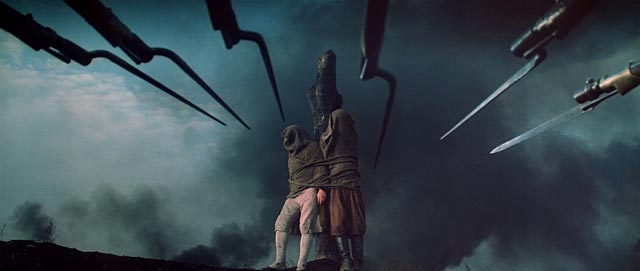
This battle is matched on a more claustrophobic scale by the burning of Moscow in part four, during which Pierre wanders through an apocalyptic nightmare of fire and death. Taken prisoner, Pierre is led with others to a place of execution where he comes face-to-face with his own mortality. Although he is finally spared, this intimate awareness of death transforms him, giving him a more open and accepting attitude towards others. After the final defeat of Napoleon’s Army, he returns humbled to Natasha as Moscow is being rebuilt from the ruins. Given the sheer scale of War and Peace, it is a mark of Bondarchuk’s skill as a director that we never quite lose sight of the personal story amidst the sweeping spectacle. He evokes memories of the work of earlier masters like D.W. Griffith, Sergei Eisenstein and Abel Gance, but also uses more modern subjective techniques, particularly handheld cameras and jarring editing, to emphasize the instability and chaos of the war. This subjective approach reaches its peak towards the end of part two when Natasha is swept away by her romantic illusions about the caddish Kuragin, who plans to ruin her for his own amusement. This is conveyed through a lengthy montage almost entirely devoid of sync sound, using layered imagery and multiple dissolves to create an hallucinatory fever dream reflecting Natasha’s emotional immaturity.
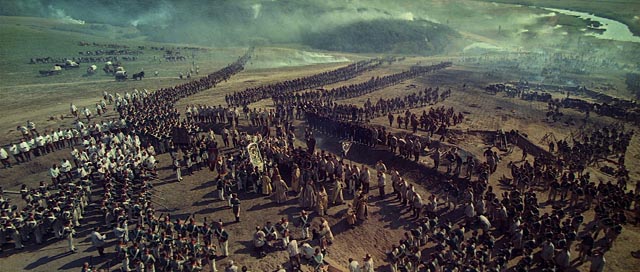
The Disk
Not surprisingly, the 2K restoration used for Criterion’s Blu-ray release is a vast improvement over RusCiCo’s 2003 DVD set. However the image still has issues, no doubt due in large part to the source materials. Because the film was intended to display the capabilities of the Soviet film industry, Bondarchuk and his crew were forced to use Russian cameras and film stock, which were technically inferior to those available in the West. Colours and contrast are somewhat inconsistent throughout the seven-hour feature, but this is only occasionally distracting. Bondarchuk uses sound expressively, with the chaotic roar of battle and sweeping epic score by Vyacheslav Ovchinnikov occasionally giving way to subjective passages of near silence which focus moments of visual horror.
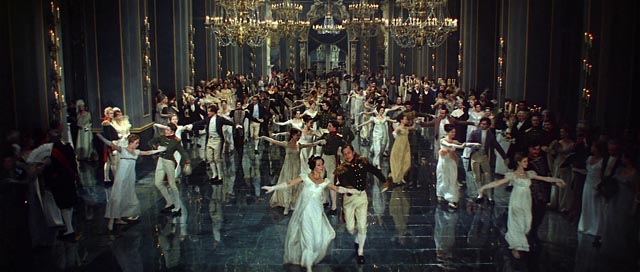
The Supplements
The two disc set includes almost three hours of new and archival supplements which provide valuable insight into the production. There are new interviews with cinematographer Anatoly Petritsky (14:20) and Fedor Bondarchuk, the director’s son (6:41), which illuminate the enormous effort involved in the filming. Author Denise J. Youngblood (46:44) provides a detailed historical account of the production, while a pair of archival documentaries give a contemporary glimpse behind the scenes, one produced by Mosfilm in 1969 (30:52) and the other made for German television in 1966 (48:36) before filming was actually completed. Both of these contain fascinating shots of Bondarchuk and his vast crew at work on scenes of daunting scale and complexity. There is also a French TV production (27:19) focusing on actress Ludmila Sevelyeva, a former ballet student who made her acting debut as Natasha in the film.
A re-release trailer (1:40) is also included and the booklet essay is by critic Ella Taylor.
Comments
I’ll have to watch this again. I’m ashamed to admit I fast-forwarded to the battle scenes. The spectacle is amazing.
I remember thinking when I first saw it years ago on CBC (I think they ran it on four consecutive Saturday evenings, probably pan-and-scanned) that the ballroom scenes were interminable and tedious, but this time they didn’t drag at all …
That’s interesting. Sounds like you were more engaged in the stories of the characters this time. Perhaps it took one viewing to get them straight in your head. All those Russian patronyms, not to mention Name Days all over the place… you almost need a notebook beside you to keep track.
That’s why I could never get through the book.
where can I stream this movie on my HP computer?
It’s on the Criterion Channel, here:
https://www.criterionchannel.com/war-and-peace-1